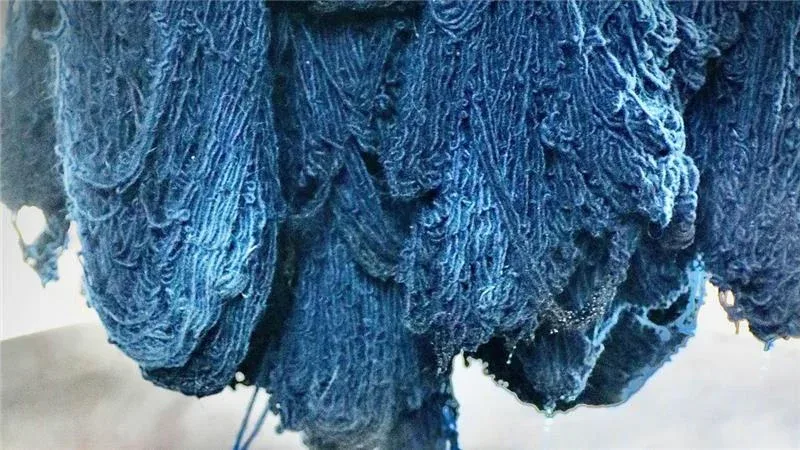There is a story behind every garment in your wardrobe. Starting with the cleaning of raw fibres to the addition of colour, every one of these processes influences the manner in which the fabric is made strong, soft, and vibrant. The process is very important to individuals who are concerned about organic khadi cotton fabric, Indian fabric types, Indian silk fabric, or any natural fabric. The right material selection, intelligent fabric planning and collaboration with responsible fabric suppliers, Artisanal fabrics and handmade fabrics are the factors that guarantee beauty, comfort and care for the planet.
The Step-by-Step Journey of Transforming Natural Fabrics into Lasting Colour
Cleaning the Fibre: Scouring and Degumming
Raw fibres should be cleansed before dyeing. Natural oils and dirt are common in cotton or khadi and prevent the dyes from sticking to them. The fabric is subjected to the process of scouring, where hot water and mild natural washes remove these impurities.
In the case of silk, this cleaning is known as degumming. Silk strands possess a sticky substance known as sericin, which must be extracted in order to make them soft and lustrous. The modern degumming involves the application of environmentally friendly enzymes in lieu of the harsh chemicals, with the fibres maintaining their strength and minimising waste. It helps to make fabric soft and durable, and that is the first thing.
Preparing the Fabric for Colour
Fibres are made clean, after which the absorption of dye is evenly distributed. This is done during fabric planning, a procedure that determines the weave, yarn twist and the structure in order to allow the dye to flow uniformly. Good planning will give you no patches or stragglers. This step also determines the ultimate feel of the cloth, smooth, rough, heavy or airy. In the case of natural fabrics, this ratio between texture and tone counts a lot.
The Art of Dyeing: Bringing Colour to Life
India enjoys a long history of dyeing and weaving. India has numerous varieties of fabric, each of a different colour and character. Dying may occur in two forms: yarn dyeing (prior to weaving) and piece dyeing (post-weaving).
Patterns such as stripes or ikat designs are done on a yarn through yarn dyeing, whereas plain solid colours are done through a process called piece dyeing. Numerous types of Indian fabrics combine the two techniques, based on the piece of artwork and the preference of the craftsman.
There are natural dyes, produced out of plants, roots, bark, or minerals, which have been used since ancient times. Deep blue, red, and yellow are typical of indigo, madder, and turmeric. Artisans employ mordants to fix colours so that they remain stuck. Older mordants made of metals have been substituted with newer and more environmentally friendly mordants, which keep natural fabrics safe both to the skin and the environment.
Making Colours Last
Fabrics are dyed, after which they are washed and processed to prevent colours not fading easily. These are tests performed to check colour fastness, strength, and feel. A high-quality Indian silk fabric or organic khadi cotton fabric that is properly treated maintains its shine and non-slippery texture despite numerous washes. What we get is a long-lasting and beautiful-looking cloth.
Finishing Touches: Feel and Flow
After dying the fabric, it is then subjected to finishing treatments to make it soft, smooth or shiny. There are those that are pressed as well as those that are anti-shrink or wrinkle-free treated. Artisanal fabrics and handmade fabrics are normally treated softly with traditional tools so that they can retain their natural texture. Each finish contributes to the comfort, shine and life of the cloth.
Choosing Ethical Fabric Suppliers
The way the fabric is made is also a contributing factor to true quality. The ethical fabric suppliers are concerned with decent wages, healthy working conditions and clean production processes. They minimize the chemical waste and help the local communities. By selecting such suppliers, one will ensure sustainability and keep the centuries-old traditions of crafts in India.
The process of fabric starts with cleaning the raw fibres and concludes with its permanent colouring, and is a combination of science, tradition, and art. Every single thread in the khadi cotton fabric, organic, Indian silk fabric or any natural fabric has some care and creativity. Planning smart fabric, sourcing responsibly and having skilled hands means that whatever you wear will be beautiful and responsible.
Svarna continues to support these values by blending Indian craftsmanship with modern techniques, offering sustainable, high-quality fabrics that celebrate India’s textile heritage.
FAQs
1. What makes organic khadi cotton fabric different from regular cotton?
It is handwoven, chemical-free, and eco-friendly.
2. How do natural fabrics retain colour and strength?
Through careful cleaning and eco-friendly dyeing.
3. Why choose artisanal fabrics from ethical fabric suppliers?
They support traditional craft and sustainable practices.



